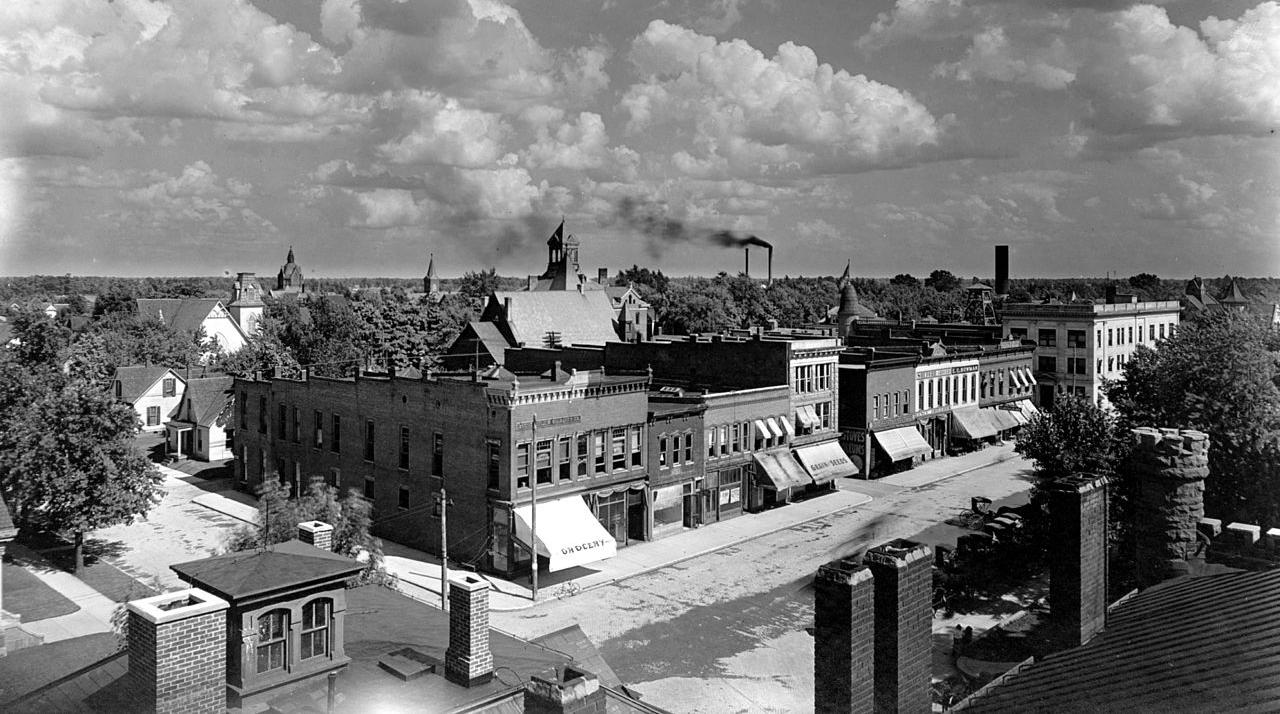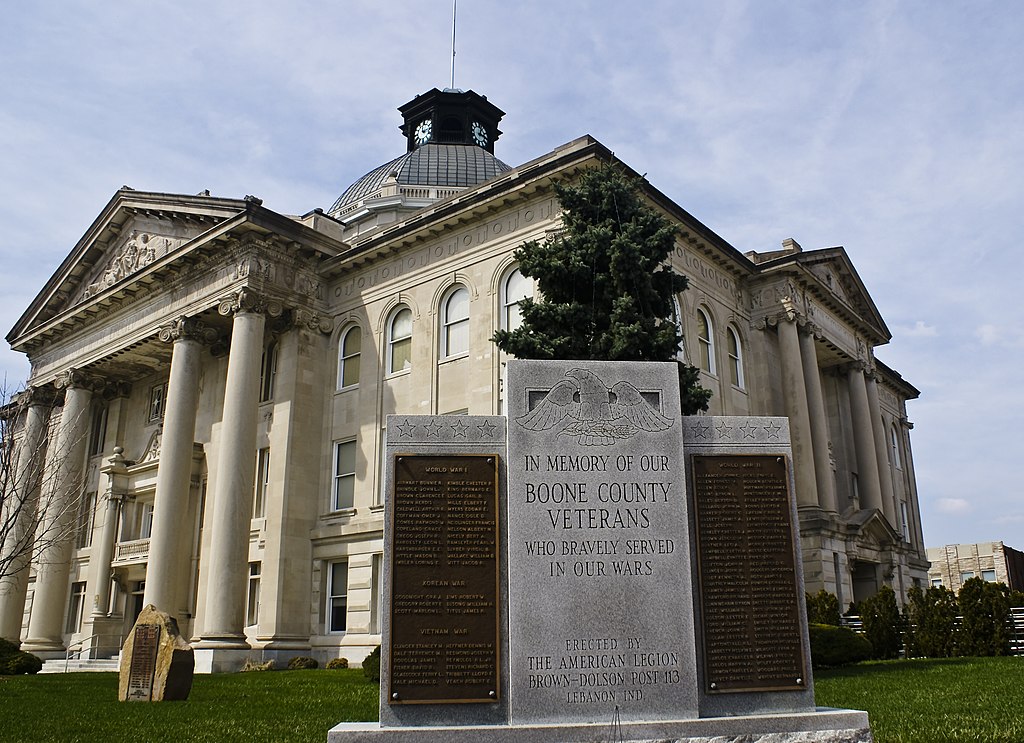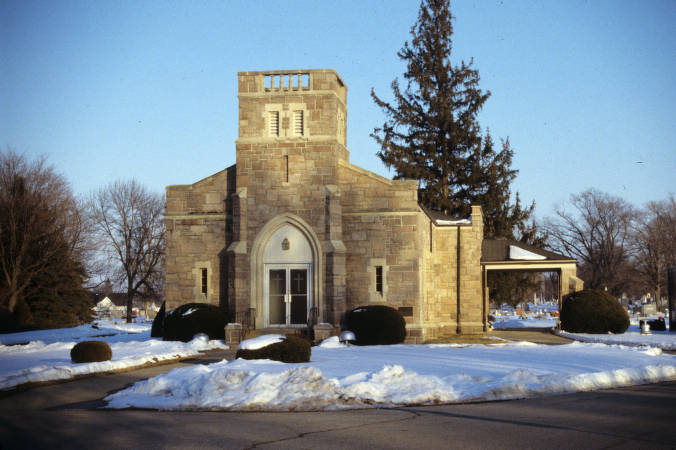Lebanon is the seat of Boone County and is located strategically along Interstate 65, almost equidistant from the state capital of Indianapolis and the college town of Lafayette. It is 29 miles northwest of downtown Indianapolis and 36 miles southeast of Lafayette.

The first settler to the area was Abner H. Longley, for whom a Lebanon city park was later named. Lebanon was founded by two progressive Indianapolis community builders in 1830. General James Perry Drake and Colonel George L. Kinnard, both Indiana militiamen, learned early of the planned organization of .
Based on the knowledge of the placement of the county seat per Indiana state law, Drake and Kinnard speculatively purchased three tracts of land near the geographic center of the county anticipating that the county seat and the development of a town would fall within the boundaries of their tracts.
Federal Land office records in Crawfordsville, Indiana, show an application for deeds to the three tracts filed March 1, 1830, at $1.25 an acre. The original plat included 19 blocks surrounded by a town square. Lebanon was officially established on April 30, 1830, following action by the Indiana General Assembly.
The first session of the Boone County Circuit Court, however, was not held in Lebanon. The first term was held in Jamestown, followed by one term in Thorntown. The third session was held in Lebanon in Longley’s home.
Kinnard, the Marion County surveyor, ensured that Lebanon would flourish. He surveyed a road that ran northwest from Indianapolis through the wilderness directly into Lebanon on Main Street and then to Lafayette. Kinnard and Drake donated every third lot, the town square, and 40 acres of additional adjacent land to Boone County in their effort to secure Lebanon as the county seat. Bricks and shingles for the construction of a county courthouse were thrown into the deal as a further enticement.
In 1832, the Indiana General Assembly selected it as the county seat and Adam French, one of the town’s first commissioners gave the town its Scriptural name after seeing hickory trees that reminded him of the Cedars of Lebanon from the Bible. Using Kinnard and Drake’s donated materials, construction on a two-story brick courthouse on Lebanon’s town square was completed in 1839. By 1849, Lebanon had a population of 500.

A crumbling foundation required replacement of the original courthouse in 1856. That courthouse stood until 1909 when it was razed to construct a new courthouse in 1911. Joseph T. Hutton of Hammond, Indiana, served as architect of the three-story structure constructed of granite and Indiana limestone and is neo-classical in style. From the center of the roof rises a windowed, octagonal stone foundation for the glass dome, which is surmounted by the clock tower. The courthouse features a monumental central portico on the south facade that has four smooth-dressed Ionic columns, each of which is 35 feet 5.5 inches in height, 48 inches in diameter at the base and 40 inches in diameter at the top. Each column weighs approximately 30 tons. The eight monolithic limestone columns, four at each of the north and south entrances, are the largest turned columns in the United States. The 52-foot diameter art glass dome is the second-largest in the state, exceeded only by the dome of West Baden Springs Hotel.
The Boone County Courthouse is thought to be the only public building in the world that is bisected by a principal meridian line. The second principal meridian line passes through the center of the courthouse and is marked by a tablet, consisting of an arrow in white and black marble tiles, the words “Meridian Line” in bronze letters. Eight rare Hahl pneumatically calibrated clocks keep time inside the courthouse. The National Register of Historic Places listed the courthouse on its registry in 1986.
In 1893, Lebanon school superintendent and newspaper publisher Strange Cragun built a 2 ½ story Queen Anne style “T” gabled dwelling at 404 W. Main Street in downtown Lebanon. The home features a round corner tower and a wraparound porch. The Cragun’s hosted notable guests at the house such as vice president , poet , and Indiana Governor Samuel Ralston. In 1988 the Cragun family gifted the house and all its contents to the Lebanon Historical Society. With most of its original furnishings inside, the home serves as a living history museum presenting an image of late-19th -century Lebanon homelife. In 2011 the Strange Nathaniel Cragun House was listed on The National Register of Historic Places.
In 1929, Lebanon native Henry Ulen relocated his East Coast construction firm to Lebanon and incorporated the eponymous town north of the city center. At just 0.06 square miles of land, Ulen features elegant homes, boulevard lighting, and a country club. The town, listed on the National Register of Historic Places in 2015 is surrounded by Lebanon.

Lebanon’s Oak Hill Cemetery was listed on The National Register of Historic Places in 2014. Notable burials include Indiana Governor Samuel Ralston.
Though formerly a farming community, Jim Acton, Lebanon’s mayor during the mid-1990s envisioned constructing a major multi-tenant industrial development to attract businesses and create jobs. Duke Realty developed the project known as the Lebanon Business Park (LBP), which has 7.9 million square feet of industrial, manufacturing, and distribution space sitting on 1,250 acres. Since its creation, more than 2,200 jobs have come to LBP.
The Lebanon Community School Corporation has four elementary schools, one middle school, and one high school under its jurisdiction. City government has worked to revitalize Lebanon’s Historic Downtown Square as well as grow and improve the parks and trails system. Gentry has done much to fuel employment opportunities by attracting many businesses to the area. These companies include Ken’s Foods, XPO Logistics, People’s Brewing Company, and Continental Tire. Major businesses include distribution and logistics, education, healthcare, and manufacturing.

Is this your community?
Do you have photos or stories?
Contribute to this page by emailing us your suggestions.